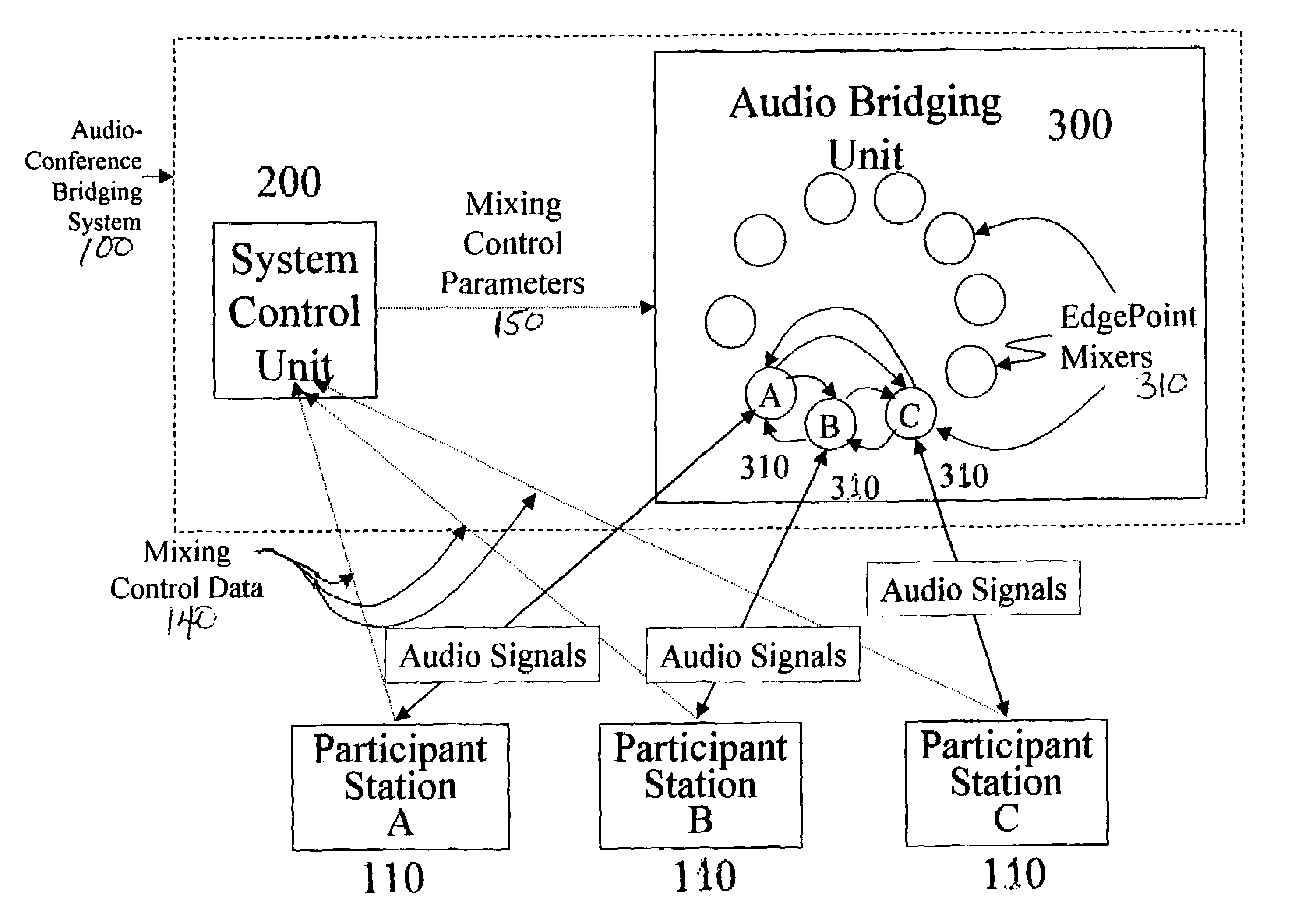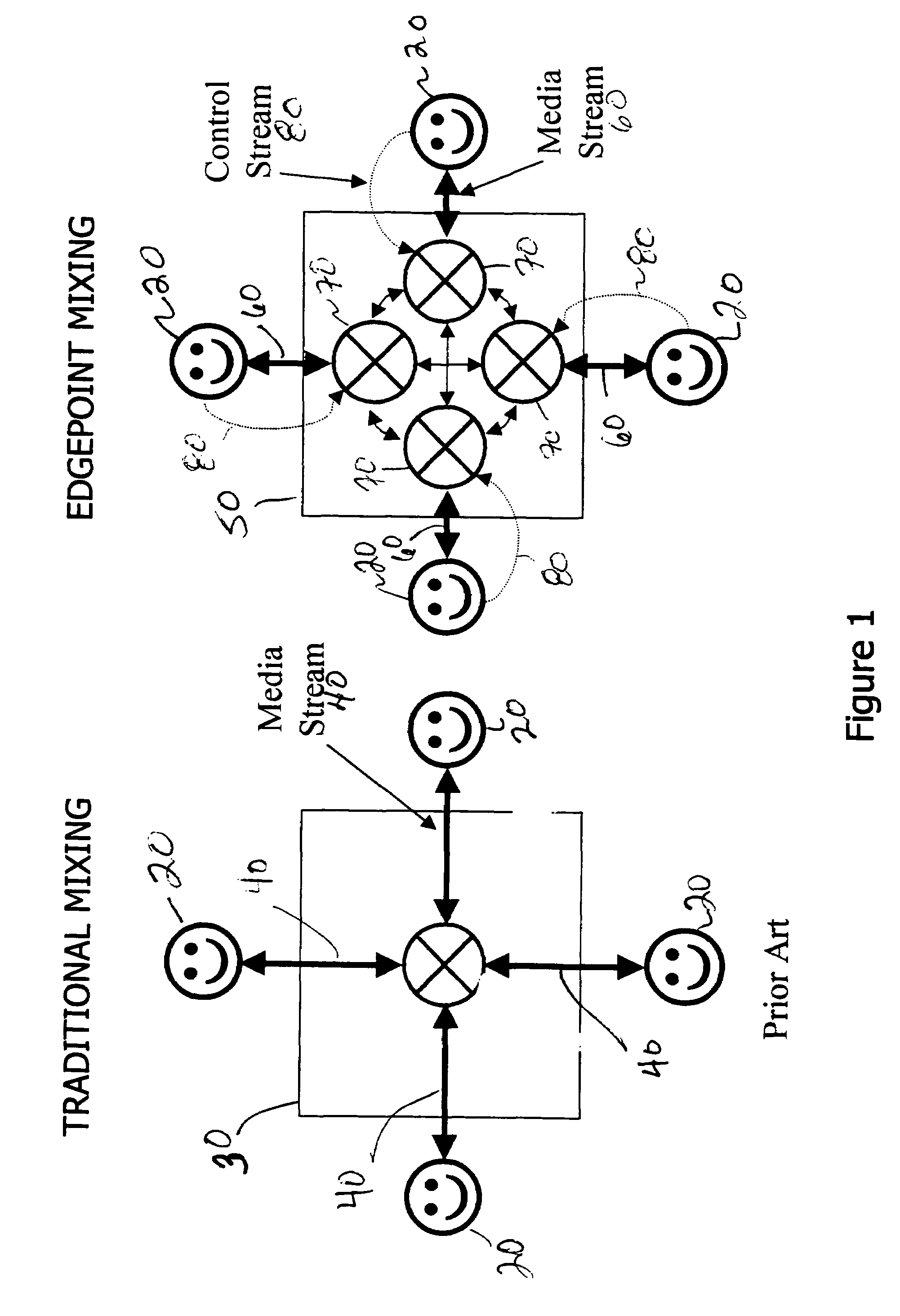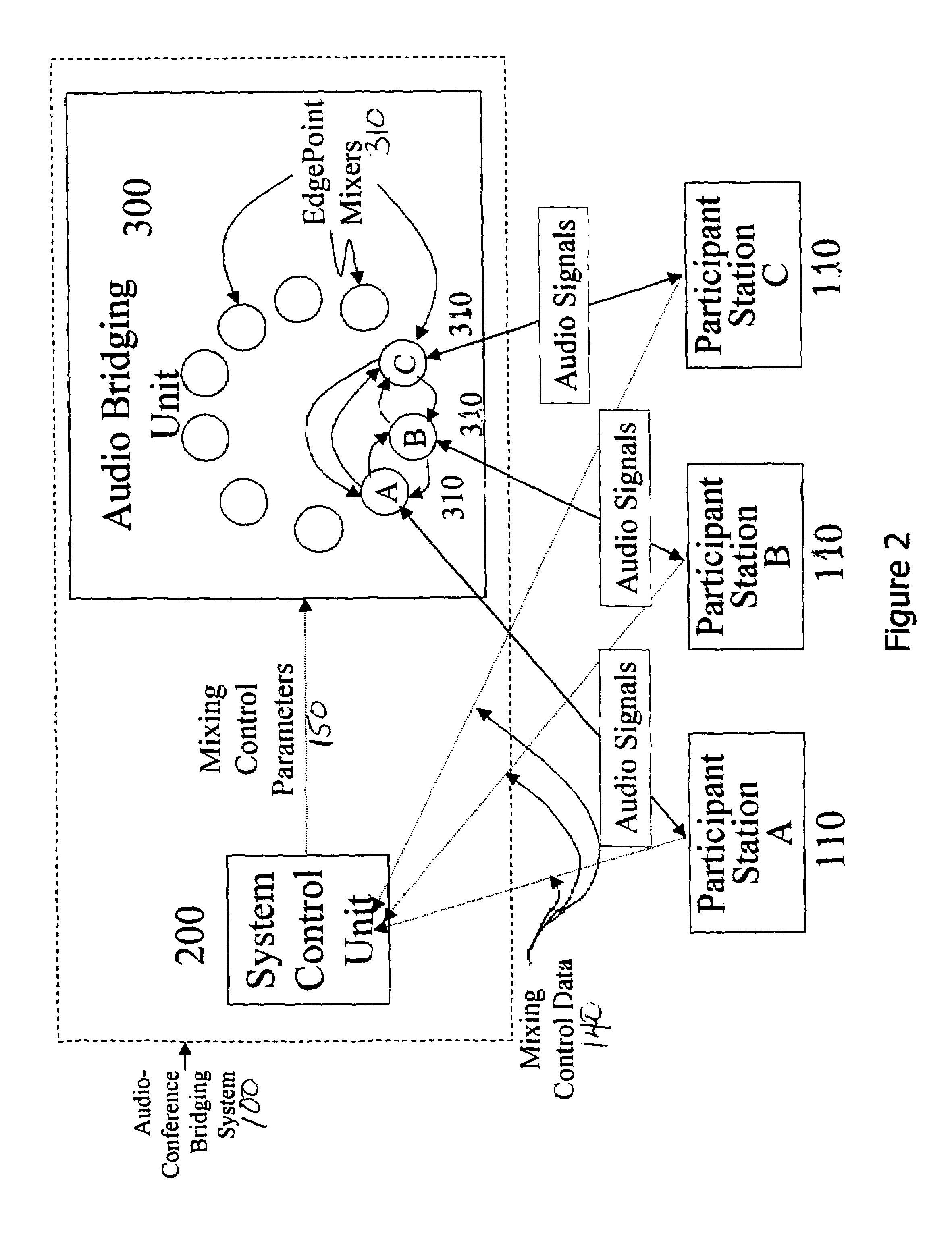Teleconferencing bridge with EdgePoint mixing
a technology of edgepoint mixing and teleconferencing, applied in the field of communication systems, can solve the problems of inability of end users to control the conferencing experience, inability to amplify or attenuate the voices of individual conference participants, and insufficient audio-conferencing experien
- Summary
- Abstract
- Description
- Claims
- Application Information
AI Technical Summary
Benefits of technology
Problems solved by technology
Method used
Image
Examples
Embodiment Construction
[0030]The system and method of the present invention overcome limitations of traditional bridges by providing a separate mixing function for each participant in a conference. The present invention thus supports conference applications seeking to deliver a more realistic simulation of a real-world meeting experience. In live face-to-face meetings, each participant hears something slightly different, due to position and room acoustics, etc. In other words, each person actually has a separate mixing function, which is implemented in his or her auditory system. By providing each conference participant with a separate mixing function, the present invention permits recreation of a real-world conference environment.
[0031]The present invention also preferably provides a high degree of end-user control in a conference. That control can be used to amplify other speakers who are difficult to hear, attenuate sources of noise, filter out unwanted content (such as vulgarity), etc. Thus, each part...
PUM
 Login to View More
Login to View More Abstract
Description
Claims
Application Information
 Login to View More
Login to View More - R&D
- Intellectual Property
- Life Sciences
- Materials
- Tech Scout
- Unparalleled Data Quality
- Higher Quality Content
- 60% Fewer Hallucinations
Browse by: Latest US Patents, China's latest patents, Technical Efficacy Thesaurus, Application Domain, Technology Topic, Popular Technical Reports.
© 2025 PatSnap. All rights reserved.Legal|Privacy policy|Modern Slavery Act Transparency Statement|Sitemap|About US| Contact US: help@patsnap.com



